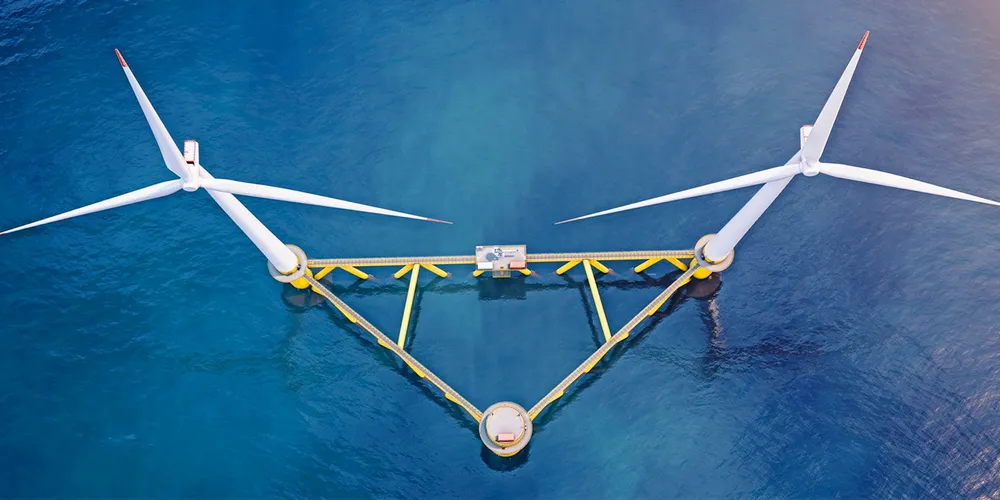Floating wind pioneer Hexicon has partnered with international contractor Worley to build the full-scale flagship of its innovative two-turbine concept for a demonstration project in the Norwegian North Sea, a key step in the run-up to first commercial arrays using the design in a range of international markets.
The turnkey deal, which encompasses engineering, procurement and fabrication as well as installation management of a TwinWay demonstrator at the
MetCentre deepwater test site off the west of Norway, has construction of the 6MW prototype – which will fly two refurbished 3MW machines – starting next autumn at Worley’s Rosenberg shipyard.
“After years of development, numerical analyses and physical model testing, we are now putting the final pieces in place to deploy the full-scale version of our patented design,” said Marcus Thor, CEO of Hexicon.
“This is naturally an important milestone to prove the benefits of our technology and accelerate the journey towards commercialisation. Worley is a tier-one contractor in the renewable sector, and I’m thrilled that their deep competence and infrastructure will be engaged as TwinWind becomes a reality.”
Thor told Recharge: “The key value driver for us in this project is speed, and as such we’ve decided to go with second-hand turbines being available right away. Additionally, choosing one of the more commonly used turbines will ensure that the turbine performance on our floater can be measured against substantial historic data.”
Worley vice president for global offshore wind Chris Cowland said: “We’re excited to be part of such a ground-breaking project as TwinWay, in an industry that is forecasted to grow exponentially over decades to come.
“The learnings and collaboration through this project will not only provide crucial evidence of the specific and highly promising technology, but also why wind power in deep water areas will be an important part of the global transition to renewable energy.”
Sweden-based Hexicon has global ambitions for its twin-turbine floating wind design, which is along with South Korea is also in the frame for deployment in plays as diverse as Norway,
Scotland, Spain and
South Africa, as well as its home market.
The company in June wrapped
key model tests as it gears up for first projects in Europe, including at the
former WaveHub marine R&D hub energy test site in the UK Celtic Sea, which it bought recently to trial its next-generation design as a 30-40MW array.
CEO Marcus Thor told
Recharge in an exclusive interview earlier in 2021 that the company – an early pioneer of floating technology that then stalled – is now on the cusp of a “whole new chapter” with fresh capital investment and major projects taking shape internationally.
MetCentre is home to the world’s first floating wind turbine, the 2.3MW unit that started life as the
Hywind Demo and is now used for R&D, as well as
Stiesdal Offshore Technology’s TetraSpar demonstrator.
The Global Wind Energy Council
expects 16.5GW of floating turbines to be in the water by 2030, a dramatic increase from the 6.5GW it was anticipating only a year ago, with most of that growth coming in the second half of the decade when the sector, which currently has just over 100MW in place, is tipped for dramatic lift-off.
